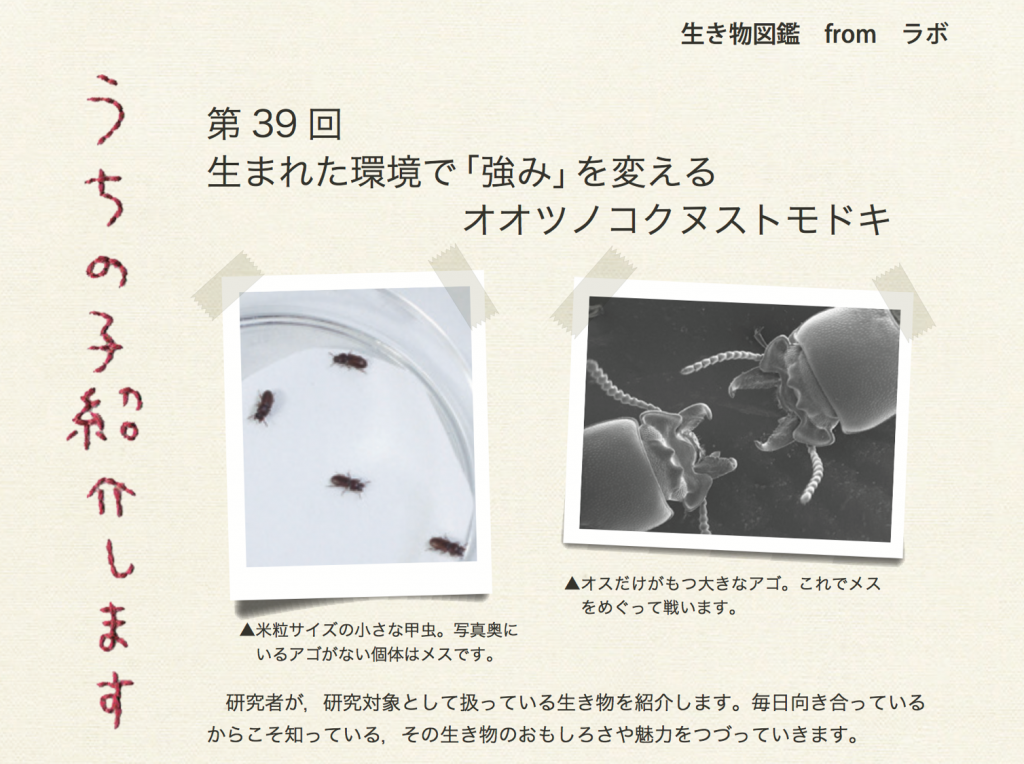- someone
Someone vol.38] [Pictorial Book of Living Things from the Laboratory] Changing "strengths" in the environment in which they were born, the giant horned owl.
2017.03.01
The Oriental giant horned beetle, A. orientalis, is a member of the same family of beetles as the stag beetle. Although its body is as small as a grain of rice, it has a large jaw similar to that of the stag beetle, which is the origin of the name "giant horned beetle. Only the male has a large jaw and fights over the female, but the male that loses the fight is depressed for four days and continues to run away from the battle.
The "size" of their weapon, the big jaw, is an important factor that determines the outcome of the game, but how do you think it is determined? Is it inherited from parents? Or do they get bigger by training? Actually, it is strongly related to the amount of nutrients stored in the larvae's body through feeding.
Larvae that grow up in an environment with abundant food become large adults, with their mandibles more than three times larger than those of the smaller, less well-fed males. On the other hand, small males have smaller jaws and larger wings to extend their range of movement, allowing their offspring to live in a more food-rich environment. The adults of the large and small males are very different in shape. Surprisingly, the DNA itself, which is the blueprint, does not determine the shape of the adult, but rather the exact same DNA can be used differently depending on the nutritional environment. Dr. Takamine Ozawa of the University of Tokyo has discovered that a mechanism called the "epigenome" is involved in the different usage. The epigenome is a cellular memory system that can flexibly change in response to the environment, and plays the role of a switch for the different use of blueprints.
Will they use their precious nutritional reserves for the mandibles or for the wings? If everything is determined by the DNA sequence, the offspring of a parent with a large mandibles will use the nutrition to enlarge its mandibles in any environment. However, depending on the environment in which they are born, large mandibles may not always be advantageous, and sometimes they may be disadvantageous. They have acquired the strength to survive no matter what environment they are born into by making full use of their epigenome, which can be changed according to the environment. (Text by Misato Kurihara)
Interviewed by: Dr. Takamine Ozawa, Project Researcher, Department of Interdisciplinary Sciences, Graduate School of Arts and Sciences, The University of Tokyo
